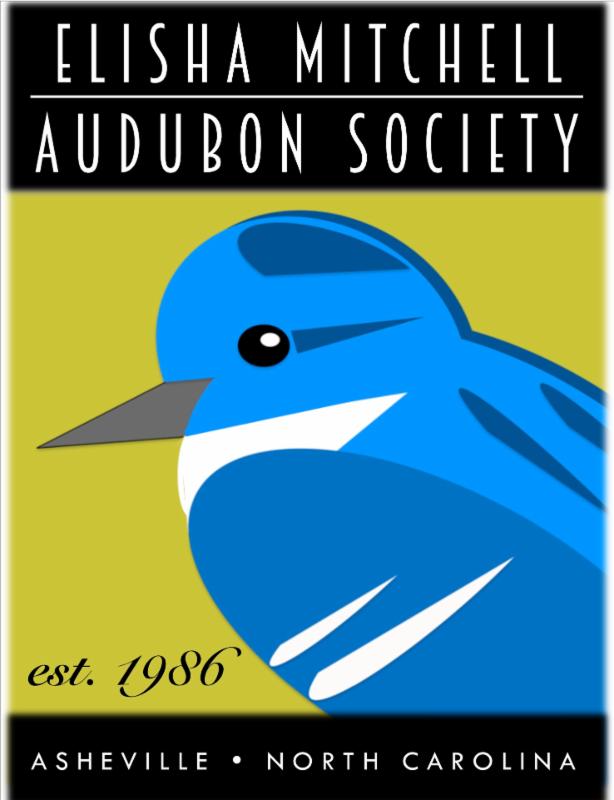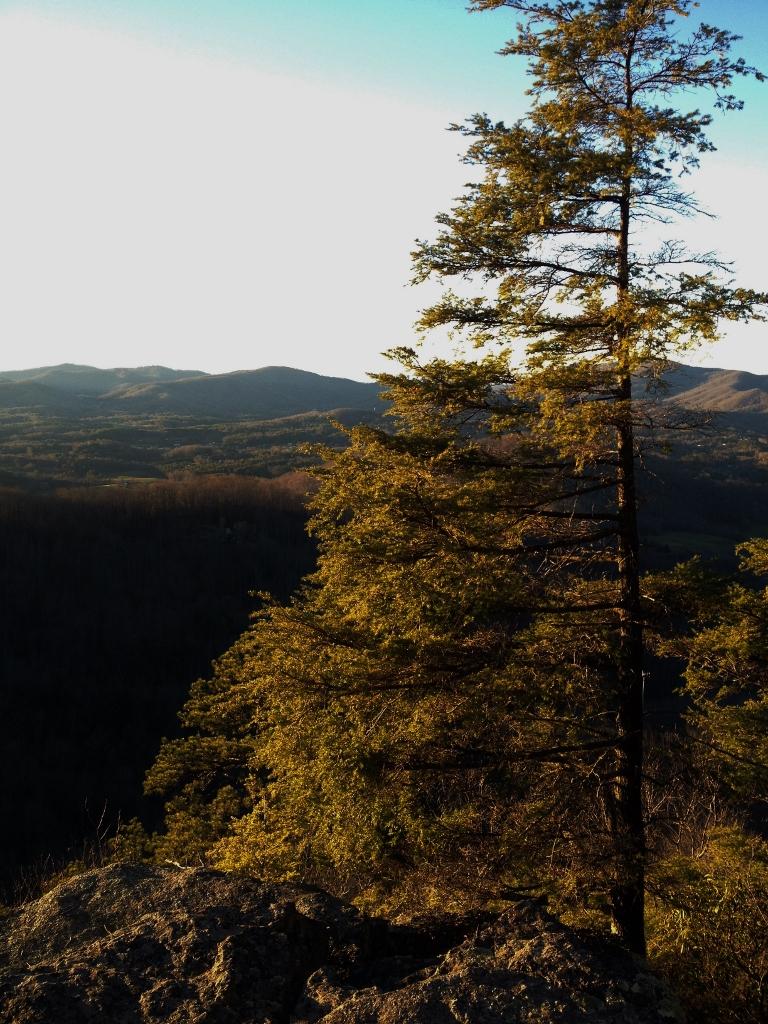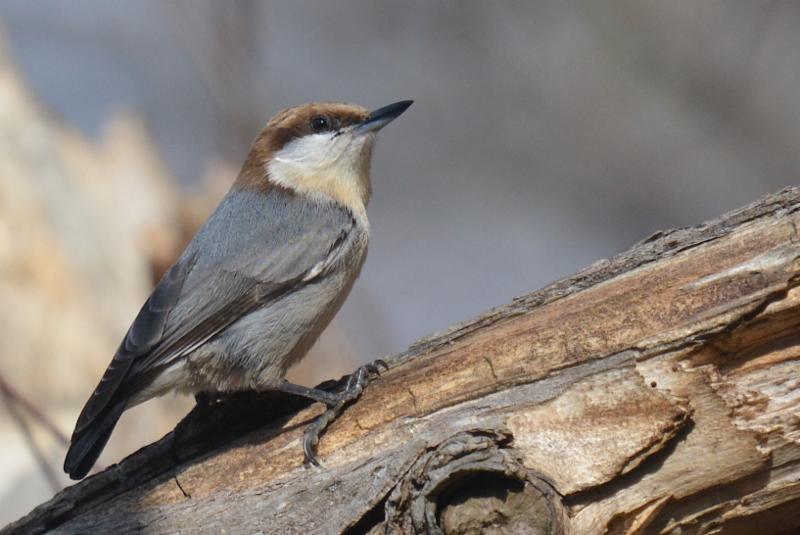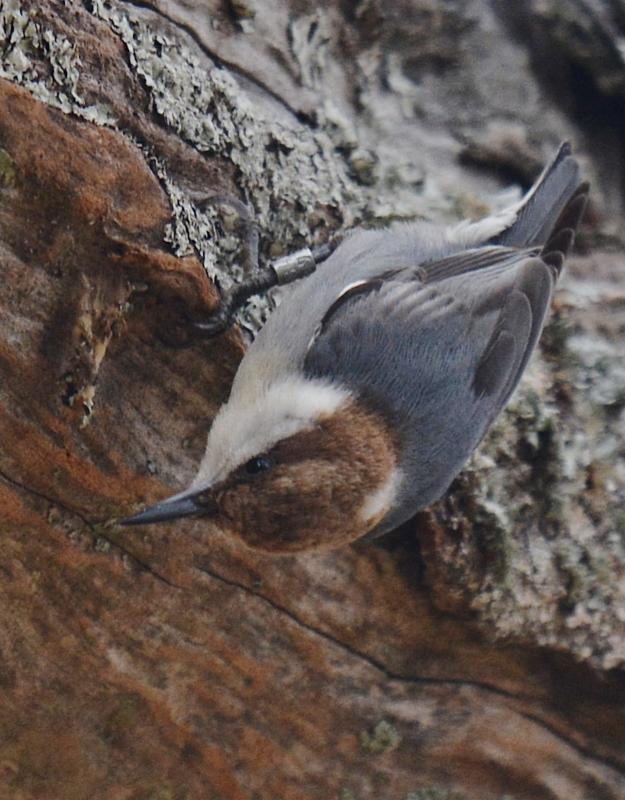 Sat, Mar 17, 9am Sat, Mar 17, 9am
Swannanoa Valley Birdwalk
Mar 20, 7:00pm
EMAS Program
"Is there Hope for Hemlocks?"
Reuter Center, UNCAsheville
Sat, April 7, 9am
Beaver Lake Birdwalk
Sat, April 14, 9am
Jackson Park Birdwalk
April 17, 7:00pm
EMAS Program
"Golden Opportunities: How protecting and managing land benefits priority bird species"
Reuter Center, UNCAsheville
Sat, April 21, 9am
Swannanoa Valley Birdwalk.
|
|
Sierra Club Meeting
The Sierra Club welcomes Dave Rogers who will present highlights from the Sierra Club's recent report, "A Pathway to a cleaner Energy Future for North Carolina." Rogers is the representative for the Sierra Club's Beyond Coal campaign.
Thursday, April 5, 7 p.m. at the Unitarian Congregation, 1 Edwin Place. Free and open to the public
|
For the latest schedule and any changes:
|
|
 |
|
 The EMAS board is excited to announce that Elisha Mitchell Audubon will be hosting the Audubon NC bi-annual, state meeting on September 7-9, 2018. The host hotel and meeting place will be the Crown Plaza resort. Birdwalks with local experts, indoor programs, a Friday night social, and a Saturday night dinner are being planned. Please mark your calendars and join us for lots of birdy camaraderie! The EMAS board is excited to announce that Elisha Mitchell Audubon will be hosting the Audubon NC bi-annual, state meeting on September 7-9, 2018. The host hotel and meeting place will be the Crown Plaza resort. Birdwalks with local experts, indoor programs, a Friday night social, and a Saturday night dinner are being planned. Please mark your calendars and join us for lots of birdy camaraderie!
The EMAS Conservation Committee has recently formed an advocacy group. They will occasionally send out timely emails asking members to help advocate for birds when legislative actions threaten birds and bird habitats. We ask you to take the simple action of writing a letter or calling your legislators when is it truly needed to voice your support for birds.
Members of the EMAS nominating committee, Nancy Casey, Bethany Sheffer, and Tom Tribble, are seeking candidates for the June 2018 board elections. The EMAS board is comprised of approximately 13 members all of whom volunteer their time to make our chapter one of the most vibrant in NC. This is a great way to get involved with the local birding community and to help birds. We are seeking a Secretary, a Vice-president and At-large board members to serve a minimum two-year term. Board meetings are held at the Reuter Center, UNCA, on the first Tuesday of the month. If you're interested in joining the board, please contact Tom Tribble at
tntribble@gmail.com
|
A little bug is killing
 |
|
 |
Blackburnian Warbler by Alan Lenk |
millions of hemlock trees and threatening water quality, wildlife habitat, and forest health across eastern forests. Hemlocks have been in decline for several years and their loss is impacting many forest species, including birds. As many as ninety bird species, including Black-throated Green Warbler, Blackburnian warbler, and Acadian Flycatcher, rely on hemlocks for nesting and cover. The Hemlock Restoration Initiative, a program sponsored by the NC Department of Agriculture & Consumer Services and the U.S. Forest Service, is working on solutions to stem the decline of hemlocks.
The mission of the HRI is to work with a variety of partners and existing programs to restore hemlocks to long-term health throughout North Carolina, and to ensure that both the Eastern and Carolina hemlock can survive. Sara deFosset and Thom Green, both from the Hemlock Restoration Initiative, will highlight the
 importance of
hemlocks in western North Carolina ecosystems. They'll discuss threats from the hemlock woolly adelgid and enumerate current efforts to combat this pest, including getting the public involved in hemlock conservation.
Sara deFosset, the Outreach Associate for the Hemlock Restoration Initiative, completed her graduate studies in Sustainable Development at the University of California Santa Barbara. Thom Green is serving through AmeriCorps Project Conserve as the Stewardship and Volunteer Engagement Associate at the HRI. Thom holds an M.S. in Biology from Western Carolina University with a focus in forest ecology and has worked as an environmental educator.
All EMAS programs are free and open to the public.
|
This Scotsman, after
 whom five bird species are named, began as a weaver and a poet. His radical writing led to his being accused of libel and blackmail, for which he was jailed and fined. He later was arrested for participating in a political conspiracy. Fleeing Scotland, he immigrated to the United States in 1794 at the age of 28 and worked as a schoolteacher near Philadelphia. More importantly, he took lessons in drawing and writing from the great American naturalist, William Bartram. Despite the fact that he lacked a formal education, he became the editor of an encyclopedia and was posthumously known as the Father of American Ornithology. If you would like to find out more about this fascinating figure, follow
this link.
|
 EMAS Offers Bird-friendly Garden EMAS Offers Bird-friendly Garden
Help to Local Schools
|
Last year, a group of enthusiastic fifth grade students at Carolina Day School expressed interest in building a garden near newly constructed classrooms. They wanted to create a serene place on campus that was bird-friendly, insect-friendly, and human-friendly. After reaching out to EMAS, a plan for a native plant pollinator garden sprang into being. The students did the planting and were thrilled at the results. The garden has become an outdoor classroom offering cross-curricular opportunities for learning. Grade 2 students are working on constructing blue bird houses in STEM class. An art teacher plans to have students create birdbaths for the garden to intersect art and nature. To see more photos and read about the garden, please follow
this link. If a school you know would like help planning a bird and pollinator friendly garden, please contact EMAS president Tom Tribble by email at
tntribble@gmail.com.
|
Text and Photos by Jay Wherley
|

Brown-headed Nuthatches in the North Asheville area, including Beaver Lake, are part of ongoing research conducted by Dr. Andrew Laughlin of UNCA. Hoping to answer questions on breeding biology and phenology, he bands both adults and nestlings.
Some of the questions he researches are: Do WNC populations breed more than once a season? Do WNC populations nest at the same time as coastal/piedmont populations? Do WNC populations nest in the same density as coastal/piedmont populations?
Banding and studying  these birds also gives Dr. Laughlin a chance to teach his students about bird breeding, banding, and citizen science. these birds also gives Dr. Laughlin a chance to teach his students about bird breeding, banding, and citizen science.
Of the nest boxes at Beaver Lake, one or two are used by Brown-headed Nuthatches each season. The other boxes are used by Carolina Chickadees and House Wrens. Different types of nest boxes at Beaver Lake are used by Tree Swallows, also banded by Dr. Laughlin.
* * *
Notable recent sightings at Beaver Lake include two adult Bald Eagles and "First of Season" Tree Swallows.
|
|
|